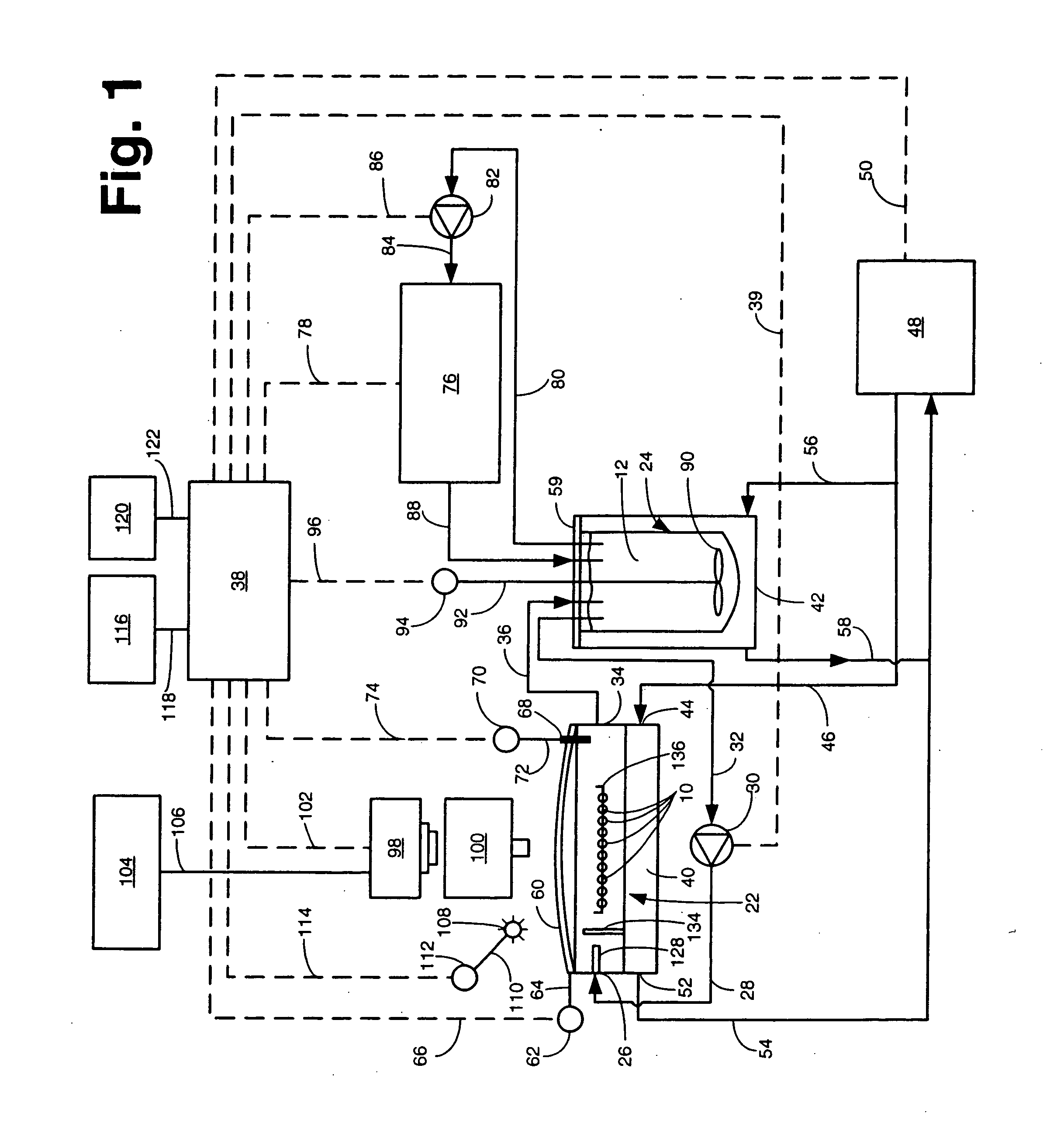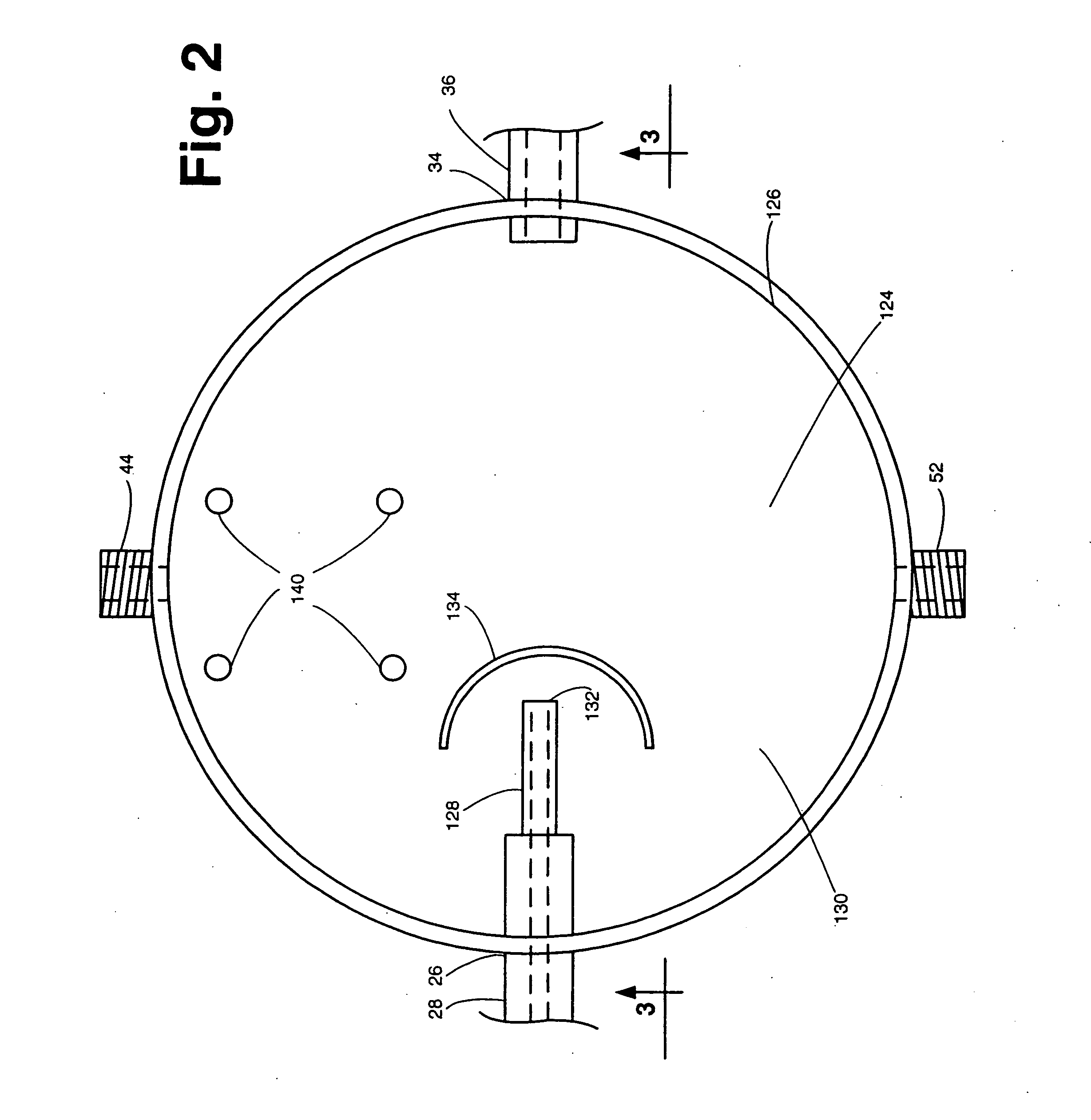Apparatus and method for concurrently monitoring active release and physical appearance of solid dosage form pharmaceuticals
a technology of active release and monitoring apparatus, applied in chemical methods analysis, instruments, suspensions and porous materials analysis, etc., can solve the problems of uneven stirring of dissolution liquid, uneven equipment, and non-uniform dissolution liquid in the chamber, and achieve high quality
- Summary
- Abstract
- Description
- Claims
- Application Information
AI Technical Summary
Benefits of technology
Problems solved by technology
Method used
Image
Examples
Embodiment Construction
[0030] Referring now to the various figures of the drawing wherein like reference characters refer to like parts, there is shown in FIG. 1 one exemplary embodiment of a system 20 for concurrently monitoring active release and physical appearance of solid dosage form pharmaceuticals constructed in accordance with this invention.
[0031] The system 20 includes a dissolution chamber 22, whose details will be described later with reference to FIGS. 2 and 3, into which at least one, but preferably a plurality of solid dosage form pharmaceuticals 10 are disposed for exposure to a dissolution liquid 12. The dosage forms 10 are located within a predetermined position within the chamber 22 in an area which defines a visualization field (to be described later). The dissolution liquid 12 is provided into the chamber 22 from a dissolution liquid reservoir 24. The details of the reservoir 24 will also be described later. Suffice it for now to state that the reservoir 24 is a hollow member for hol...
PUM
| Property | Measurement | Unit |
|---|---|---|
| volume | aaaaa | aaaaa |
| volume | aaaaa | aaaaa |
| pH | aaaaa | aaaaa |
Abstract
Description
Claims
Application Information
 Login to View More
Login to View More - R&D
- Intellectual Property
- Life Sciences
- Materials
- Tech Scout
- Unparalleled Data Quality
- Higher Quality Content
- 60% Fewer Hallucinations
Browse by: Latest US Patents, China's latest patents, Technical Efficacy Thesaurus, Application Domain, Technology Topic, Popular Technical Reports.
© 2025 PatSnap. All rights reserved.Legal|Privacy policy|Modern Slavery Act Transparency Statement|Sitemap|About US| Contact US: help@patsnap.com



